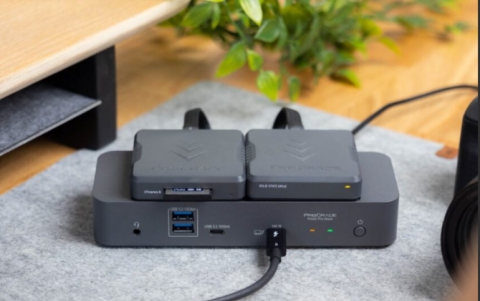
Fujitsu, Panasonic To Merge Their LSI Chip Operations
Fujitsu Ltd. and Panasonic Corp. said Thursday
they have agreed to merge their system large-scale integration chip
design and development into a new company in a bid to strengthen
their global competitive edge.
Fujitsu and Fujitsu Semiconductor have decided to establish a new fabless company with the integration of Fujitsu Semiconductor's system LSI business with that of Panasonic Corporation.
Fujitsu Limited and Panasonic Corp. have signed a memorandum of understanding (MOU) to consolidate the design and development functions of the system LSI businesses of Panasonic and Fujitsu Semiconductor Limited, a wholly owned subsidiary of Fujitsu. With the backing of capital contributions from third-party investors, Fujitsu and Panasonic will establish a new company under a fabless business model. At the same time, the two companies have agreed to discuss the transfer of business to the new company. In establishing the new integrated company, Development Bank of Japan Inc. (DBJ) has been asked to assist with investment and financing. Fujitsu and Panasonic are currently engaged in detailed discussions with the goal of promptly finalizing a contract.
By focusing on system LSI marketing, design and development under a fabless model, Fujitsu and Panasonic aim to achieve future growth in system LSI businesses.
With the new integrated company, Fujitsu and Panasonic plan to combine the technological prowess that they have long accumulated, while concentrating new investments on key fields to be a global top-level LSI company. Areas of focus include 1) High-performance solutions (high-performance servers and core technologies that support cloud infrastructure such as ultra-high-speed networks), 2) Visual and imaging solutions (next-generation DTV, applications for image recognition, etc.), and 3) Wireless solutions (mobile and extremely low-power wireless connectivity solutions that support ubiquitous networks).
Fujitsu will also transfer its Mie Plant to a new foundry company, including Taiwan Semiconductor Manufacturing Company Limited (TSMC).
Since 2009, when Fujitsu Semiconductor switched to a proprietary fab-lite business model, it established a strong business relationship TSMC in system LSI devices using 40-nanometer (nm) and beyond process technology. Now, in line with the fabless operations in the system LSI business stated above, consideration has also been given to the transfer of 300mm line to a new foundry company including TSMC.
After integration of the system LSI business to establish a new company as well as the transfer of the 300mm line of the Mie Plant, which are initiatives now under consideration, Fujitsu Semiconductor's manufacturing facilities will consist primarily of the 200mm line in Mie, the 150mm line in Aizu-Wakamatsu and the 200mm line of Fujitsu Semiconductor Technology (FSET).
In line with the decision to restructure its operations, Fujitsu will reduce its workforce in and outside Japan by redeployment of human resources and reduction in the use of external resources (approximately 5,000 employees)
The company will also transfer of employees along with the establishment of the new companies or the transfer of businesses (approximately 4,500 employees)
Fujitsu also plans to reduce corporate headquarters expenses and streamline its corporate headquarters organization.
Fujitsu Limited and Panasonic Corp. have signed a memorandum of understanding (MOU) to consolidate the design and development functions of the system LSI businesses of Panasonic and Fujitsu Semiconductor Limited, a wholly owned subsidiary of Fujitsu. With the backing of capital contributions from third-party investors, Fujitsu and Panasonic will establish a new company under a fabless business model. At the same time, the two companies have agreed to discuss the transfer of business to the new company. In establishing the new integrated company, Development Bank of Japan Inc. (DBJ) has been asked to assist with investment and financing. Fujitsu and Panasonic are currently engaged in detailed discussions with the goal of promptly finalizing a contract.
By focusing on system LSI marketing, design and development under a fabless model, Fujitsu and Panasonic aim to achieve future growth in system LSI businesses.
With the new integrated company, Fujitsu and Panasonic plan to combine the technological prowess that they have long accumulated, while concentrating new investments on key fields to be a global top-level LSI company. Areas of focus include 1) High-performance solutions (high-performance servers and core technologies that support cloud infrastructure such as ultra-high-speed networks), 2) Visual and imaging solutions (next-generation DTV, applications for image recognition, etc.), and 3) Wireless solutions (mobile and extremely low-power wireless connectivity solutions that support ubiquitous networks).
Fujitsu will also transfer its Mie Plant to a new foundry company, including Taiwan Semiconductor Manufacturing Company Limited (TSMC).
Since 2009, when Fujitsu Semiconductor switched to a proprietary fab-lite business model, it established a strong business relationship TSMC in system LSI devices using 40-nanometer (nm) and beyond process technology. Now, in line with the fabless operations in the system LSI business stated above, consideration has also been given to the transfer of 300mm line to a new foundry company including TSMC.
After integration of the system LSI business to establish a new company as well as the transfer of the 300mm line of the Mie Plant, which are initiatives now under consideration, Fujitsu Semiconductor's manufacturing facilities will consist primarily of the 200mm line in Mie, the 150mm line in Aizu-Wakamatsu and the 200mm line of Fujitsu Semiconductor Technology (FSET).
In line with the decision to restructure its operations, Fujitsu will reduce its workforce in and outside Japan by redeployment of human resources and reduction in the use of external resources (approximately 5,000 employees)
The company will also transfer of employees along with the establishment of the new companies or the transfer of businesses (approximately 4,500 employees)
Fujitsu also plans to reduce corporate headquarters expenses and streamline its corporate headquarters organization.





















